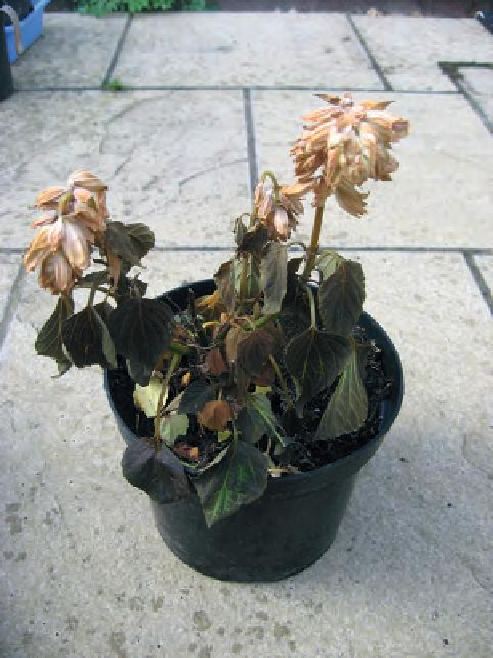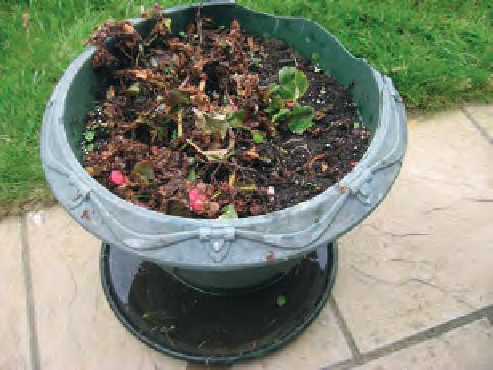Agriculture Reference
In-Depth Information
(a)
(b)
Figure 19.23
(a) Healthy
Salvia
plant; (b) high temperature effect on a
Salvia
plant. The leaves are wilting, and
edges of leaves are going dark brown
in some plant tissues. In some plant species, leaves
change from shiny to dull as a first signal of water
stress, and also may change from bright green to a
grey green. New leaves wilt, but in species such as
holly and conifers only the very youngest leaves wilt.
Flowers may fade quickly and fall prematurely. Older
leaves often turn brown, dry and fall off. Digging a few
centimetres into the soil may indicate the need for
watering with shallow-rooted perennials and annual
border plants. Shrubs with deep roots rarely need
watering, although transplanted older shrubs may
show summer water stress for a number of years (see
also Chapters 10 and 12).
19
Water-logging
Figure 19.24
Waterlogging effect on Begonia. The
plant has collapsed, and leaves are yellowing and
browning
Overwatering (see Figure 19.24) replaces the air
spaces in soil and growing composts with water,
thus excluding the oxygen necessary for root
respiration that is needed to supply energy for root
growth and nutrient uptake. Overwatering symptoms
may include the following: the whole plant may
wilt, the lower leaves turn yellow and drop. New
foliage may have brown spots. The whole plant
may become stunted, and stems and roots become
brown and decayed.
Oedema
The condition called oedema is seen as raised corky
spots on the under surface of leaves. Species such as
Pelargoniums
(Figure 19.25),
Rhododendron
,
Begonia
,
pansies, violets and some fleshy-leaved plants such as
Peperomia
are affected. Orchids can show oedema on
their petals.





